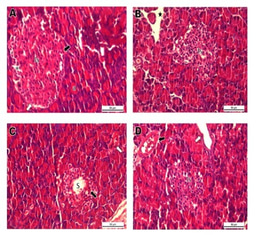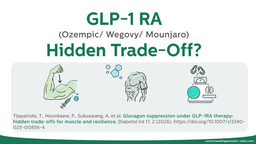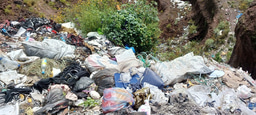Mapping of UK seafood supplies reveals mismatches between production and consumption, and large losses of dietary nutrients through exports
Published in Bioengineering & Biotechnology, Earth & Environment, and Agricultural & Food Science

Food systems are a major contributor to global greenhouse gas emissions [1]. Therefore, transforming diets to build a more sustainable food system is paramount to achieving net zero by 2045. Seafood provides more nutrients than terrestrial alternatives, at lower emissions [2], thus is likely to feature more in our diets as we transition to net zero. Both oily fish and shellfish could fill an important dietary gap as meat consumption decreases as part of more healthy and sustainable diet scenarios and alleviate emerging micronutrient deficiencies for specific population groups [3], yet fish is not considered often in studies modelling transitions to net-zero diets.
Seafood is a global commodity so we wanted to understand how seafood consumption in the UK relates to food supply chains - what is being produced, what is imported and exported, and how does this relate to what we eat and what we should be eating for optimal health. After mapping the supply chain, we also assessed dietary nutrient flows into and out of the UK. We originally wanted to map the seafood supply chain for Scotland, but quickly realised that cross-boarder data is not readily available- for example, scallops landed in Wales may be driven across the boarder and consumed in Scotland. However, focusing on the UK provided a good case study for high-income countries worldwide that have a high reliance on trade to keep fisheries and aquaculture profitable, but also to meet consumer demand and preferences.
We created a unique database [4] linking UK seafood production (capture and aquaculture), trade (imports and exports), purchases (both within and out-of-home), and consumption data, to species level, with data obtained between 2009 and 2020. We calculated supplies (e.g. that what is available to us) as production plus imports minus exports.
Key findings
- Overall, the UK is a net importer of seafood. Marine fish such as cod, haddock, salmon, and tuna dominate imports, followed by crustaceans such as prawns. These species are commonly referred to as the ‘big five’– 80% of the seafood we eat in the UK is made up of these five species.
- Dietary recommendations for fish consumption are not achieved - in fact, consumption is less than half that what is advised. Total seafood supplies also do not satisfy the dietary recommendation for fish consumption. Estimated UK fish consumption is around 115 g per person (excluding 2020 data) per week, whereas recommendations are to eat two fish (~280 grams) per week, of which one should be oily (UK recommendation), or one oily fish (~140 grams) per week (Scottish recommendation).
- Seafood supplies are largest for prawn, cod, salmon and tuna, with more than 20 grams per species per person per week available to consumers, followed by haddock, pollock, and mackerel, with more than 5 grams per species per person per week available to consumers. Production values are highest for oily fish; but we then export most of the salmon (28.7 grams per person per week), mackerel (19.1 grams per person per week), and herring (14.5 grams per person per week).
- The UK experiences large nutrient losses from seafood exports of oily fish. Retaining more exports of oily fish for domestic consumption could contribute significantly towards achieving the European recommendation for omega-3 fatty acids (up to 73 %), and recommended nutrient intakes for vitamin B12 (up to 46 %) and vitamin D (up to 7%), which would be beneficial for population health.
Our findings have major implications for policy. Both public health and fisheries policies should consider promoting increased consumption of locally produced (wild-caught and farmed) oily fish species, or shellfish, for public and planetary health, but also to improve the resilience of our seafood system. The UK is a large producer of herring and mackerel, which are relatively cheap for consumers to buy, and these species could significantly contribute to the provision of omega-3 fatty acids, vitamins B12 and D in the UK population. But most herring and mackerel are exported, indicating that consumer preferences and demand, rather than a limited supply, determine current patterns of fish production, trade and consumption, including consumption levels falling below recommendations. This highlights the need to explore opportunities and interventions that increase consumer demand for fish.
The research was led by Dr Anneli Löfstedt who has a background in fisheries and experience in working with large datasets. She was supported by Dr Bernhard Scheliga who is part of the University of Aberdeen digital services team. Harmonising large secondary datasets over a 11-year period was challenging at times - not all data are created equal or have the same granularity, some have different year start and end dates, and wording of the seafood categories differed between databases. Dr Magaly Aceves-Martins has previously worked with NDNS data and was helpful with dealing with changes in the dataset structure. The research was spearheaded by Professor Baukje de Roos who is an expert in the research area of seafood and human health, and healthy and sustainable food systems. As part of her leading role in the Scottish Government Strategic Research Programme on economically profitable and sustainable Scottish food and drink supply chains, and food environment, we worked directly with the Scottish Government Rural and Environment Science and Analytical Services Division (RESAS), the Marine Directorate, relevant policy teams and other Scottish Environment, Food and Agriculture Research Institutions (SEFARI). They all provided valuable feedback and played a crucial role in achieving research impact.
References
[1] M. Crippa, E. Solazzo, D. Guizzardi, F. Monforti-Ferrario, F.N. Tubiello, A. Leip, Food systems are responsible for a third of global anthropogenic GHG emissions, Nat. Food 2 (2021) 198–209. https://doi.org/10.1038/s43016-021-00225-9.
[2] M. Bianchi, E. Hallström, R.W.R. Parker, K. Mifflin, P. Tyedmers, F. Ziegler, Assessing seafood nutritional diversity together with climate impacts informs more comprehensive dietary advice, Commun. Earth Environ. 3 (2022) 1–12. https://doi.org/10.1038/s43247-022-00516-4.
[3] T. Beal, F. Ortenzi, J. Fanzo, Estimated micronutrient shortfalls of the EAT–Lancet planetary health diet, Lancet Planet. Health 7 (2023) e233–e237. https://doi.org/10.1016/S2542-5196(23)00006-2.
[4] A. Lofstedt, B. Scheliga, Mapping the UK Seafood Supply Chain, 2009-2020, (2025). https://dx.doi.org/10.5255/UKDA-SN-856955.
Follow the Topic
-
Nature Food

This journal aims to provide researchers and policy-makers with a breadth of evidence and expert narratives on optimising and securing food systems for the future.





Please sign in or register for FREE
If you are a registered user on Research Communities by Springer Nature, please sign in